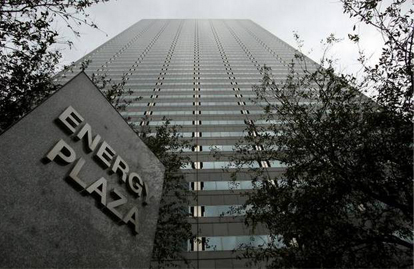© 2014 The Texas Lawbook.
By Rakhee V. Patel – (August 13) – Dallas-based Energy Future Holdings Corp. and certain of its subsidiaries are facing some new hurdles following the recent announcement that the company is scrapping its original pre-arranged bankruptcy plan. The EFH subsidiaries include Energy Future Intermediate Holding Company LLC (EFIH), the majority stakeholder in the group that owns Oncor Electric, and Texas Competitive Electric Holdings Company LLC (TCEH).

EFH filed for Chapter 11 bankruptcy protection in April with hopes of completing the reorganization process in less than a year. Prior to the filing, EFH secured plan support from several major creditors in a Restructuring Support and Lock-Up Agreement (RSA). Facing over $40 billion in debt in one of the 10 largest corporate bankruptcies in U.S. history, EFH’s goal was ambitious but theoretically achievable.
But the announcement of the original plan’s demise has changed both the timing and the playing field for EFH. The recent developments have many wondering what’s next since EFH has no clear path to achieve its pre-filing goals.
The Oncor Delay
From the start of the bankruptcy process, one of EFH’s main goals has been a tax-free spinoff of its TXU Energy division. However, an unexpected wrinkle arose when a competitive bidding war emerged relating in part to the Oncor division, resulting in EFH potentially having more value than initially thought. In an attempt to secure the bankruptcy court’s approval of debtor-in-possession financing, Florida based NextEra Energy Inc. and certain junior noteholders made a “very promising” offer that EFH described in a recent SEC filing:
“In cooperation with their various stakeholders, the Reorganizing Entities have focused (and will continue to focus) on formulating and implementing an effective and efficient plan of reorganization for each of the Reorganizing Entities under Chapter 11 of the Bankruptcy Code that maximizes enterprise value. Each of the Reorganizing Entities remains committed to the tax-free spin of TCEH and its subsidiaries (the “TCEH Debtors”) described in the RSA.”
In a typical Chapter 11, as a part of plan formulation and filing, the debtor would be identifying and negotiating with a plan sponsor, i.e. third parties interested in acquiring the new equity of a debtor company. This initial negotiation typically is conducted by the debtor-in-possession without bankruptcy court supervision. The deal with the plan sponsor serves as an opening bid, or floor, for the debtor’s new equity. After a deal is reached with the plan sponsor and incorporated into a plan, third parties may, under certain circumstances, still make higher and better offers within the plan’s predefined negotiated deal structure. The plan sponsor, therefore, controls the structure of the acquisition and, in turn, the many aspects of how bidding for the debtor’s equity will proceed, which is a valuable right.
EFH’s current strategy appears to diverge from the typical based on the company asking the bankruptcy court to conduct and supervise a bid process for the sale of Oncor.
Court oversight of the process for identifying a plan sponsor is highly unusual and bears a striking resemblance to the Section 363 sale process in establishing bidding procedures and ultimately identifying a stalking horse bidder. By obtaining court approval of the plan sponsor bid process, EFH can avoid future issues that could threaten plan confirmation by getting the court’s blessing and pre-litigating related issues.
The next pressing question is how this dynamic will impact EFH’s exit from bankruptcy and the timing.
Future Valuation Crucial
With the termination of the original pre-arranged bankruptcy plan, EFH and its subsidiaries are going back to the drawing board, which will add considerable time and expense before EFH can implement any exit strategy. Currently, EFH faces a looming deadline in late August to file the company’s plan.
Chapter 11 debtors initially have 120 days from filing as their exclusive period to submit a plan for court approval. In EFH’s case, the company has requested an extension until Feb. 23, and additional time may be requested.
With the length of time for EFH to exit bankruptcy growing longer, expect the restructuring costs to be substantially higher in the effort to secure better returns for EFH’s creditors.
Going forward, EFH must continue to negotiate with its creditors while keeping an eye on any changes in the company’s valuation, which could alter the identity of the key class of creditors whose support is critical to the plan’s eventual confirmation.
While the original goals for resolving the company’s debt issues are shifting in terms of both time and process, EFH appears to be on track for a successful reorganization.
Rakhee V. Patel is a partner in the Dallas office of Shackelford, Melton, McKinley & Norton LLP, where she represents debtors, secured and unsecured creditors, landlords, equity holders, trustees and committees in Chapter 7 and Chapter 11 reorganization and restructuring proceedings.
© 2014 The Texas Lawbook. Content of The Texas Lawbook is controlled and protected by specific licensing agreements with our subscribers and under federal copyright laws. Any distribution of this content without the consent of The Texas Lawbook is prohibited.
If you see any inaccuracy in any article in The Texas Lawbook, please contact us. Our goal is content that is 100% true and accurate. Thank you.
